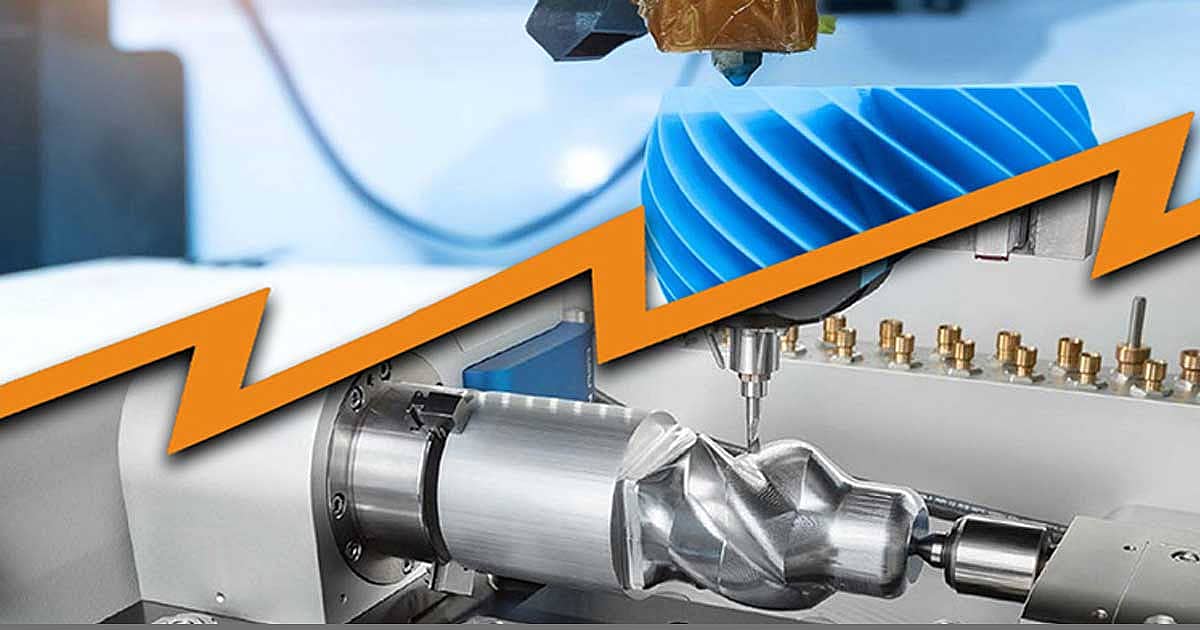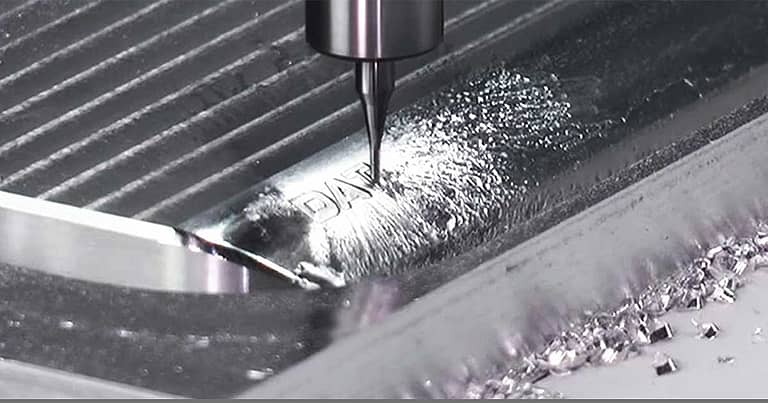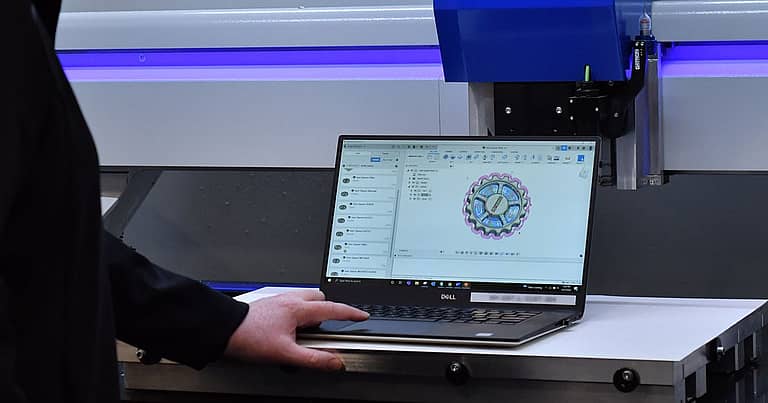In order to accurately assess what you need when setting up a prototyping lab, the first order of business is deciding between 3D printing vs. CNC milling.
Both options have proven critical to modern manufacturing processes, and each features a roster of benefits over traditional manufacturing methods. Ultimately, when it comes to 3D printing vs. CNC milling, “Choosing to make a prototype with a CNC machine or 3D printer depends on a few things: the price range, the size of the part/prototype, and the type of materials used.”
While these dependencies are unique to specific industries, projects, and purposes, it’s important to recognize the prevailing bias towards 3D printing over CNC milling. That’s why we’ve decided to set the record straight and clear up a few misunderstandings. Although 3D printing undoubtedly has its place, it’s important not to be short-sighted when evaluating the merits of CNC mills with respect to industrial prototyping.
What follows is a breakdown of the definitions, histories, applications, and projections for both processes as modern manufacturing evolves. Ultimately, we hope this information will guide your decision when it comes to what your business needs when setting up a prototyping lab.
Defining 3D Printing vs. CNC Milling
A simple explanation of 3D printing “is a manufacturing process through which three-dimensional (3D) solid objects are created. It enables the creation of physical 3D models of objects using a series of additive or layered development framework, where layers are laid down in succession to create a complete 3D object.” For this reason, 3D printing is also referred to as additive manufacturing.
According to Investopedia, “3D printing technology is already increasing manufacturing productivity, and has such potential that it could massively disrupt the manufacturing logistics and inventory management industries — if it can be successfully used in mass production, and if manufacturing becomes more local.”
Here we have 3D printing’s limitations: the process isn’t fast or affordable for mass production.
On the other hand, “Computer numerical control (CNC) machines automate the control of machine tools through the use of software embedded in a microcomputer attached to the tool. It is commonly used in manufacturing for machining metal and plastic parts.”
A common misconception about CNC is that this automated control comes at a cost — quite literally. CNC is often inaccurately assumed to be more expensive, partly because of the belief that highly skilled labor is required. In reality, CNC machining has made significant strides away from these initial truths.
3D Printing — A Brief History
The modern applications of 3D printing are rooted in the early 1980s. The history of 3D printing is a study of rapid evolution. Following the 1981 inception of 3D printing came the 1984 creation of stereolithography, which is “a form of 3D printing technology used for creating models, prototypes, patterns, and production parts in a layer-by-layer fashion using photochemical processes by which light causes chemical monomers to link together to form polymers.”
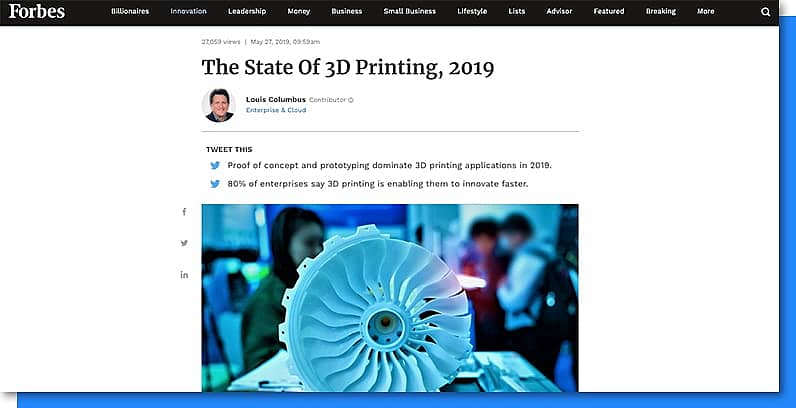
The medical industry soon capitalized on the advances of 3D printing; first in 1999, when Wake Forest Institute for Regenerative Medicine, led by Anthony Atala, MD, announced the successful printing and generation of human bladder tissue, which was then transferred into individuals with little risk that their immune systems would reject the implant because it was built from their own cellular structure or scaffolds.
Fast forward to 2016 when “the institute announced success printing living tissue structures using a specialized 3D printer that its researchers designed over a decade. The scientists printed ear, bone, and muscle structures that, when implanted in animals, matured into functional tissue and developed a system of blood vessels.”
Currently, “The most advanced 3D printing application that is anticipated is the bioprinting of complex organs. It has been estimated that we are less than 20 years from a fully functioning printable heart.”
With respect to the industrial use of rapid prototyping via 3d printing, “Manufacturers are increasing their reliance on 3D printing as part of their broader manufacturing strategies, with production use up to 51% of all respondents from 38.7% in 2018.”
This shouldn’t be surprising, particularly when you consider some highlights published by Forbes’ The State of 3D Printing, 2019:
Mass customization and support for configure-to-order and engineer-to-order product strategies also continue to be a high priority this year, continuing the trend since 2015. Increasing production flexibility is the third area of focus that guides additive manufacturing strategies today.”
According to this report, eight industries featured in the research design study: Industrial Goods (13.6%), High Tech (10.6%), Services (9.9%), Consumer Goods (8.6%), Health & Medical (6.2%), Automotive (5.7%), Aerospace & Defense (5.5%), and Education (4.9%), illustrate the diverse potential of 3D printing to support and benefit various verticals.

However, in The Battle of Manufacturing: Additive vs. Subtractive, CNC machines reign supreme: “Although additive manufacturing has been making some impressive inroads in the aerospace and automotive industries, CNC machining remains the go-to for the vast majority of manufacturers.”
How CNC Mills Came to Be
As outlined in the History and Definition of CNC 100, CNC machines, originally known as NC machines, were “controlled by complex electrical circuitry. NC machines read and executed one line of code at a time from a part program punched into a paper tape or mylar tape.”
As the technology of small computers evolved, computers started controlling machine tools, hence, the birth of CNC as a manufacturing process. From that first line of code, CNC machines have developed the capacity to store hundreds of programs.
For an in-depth history of CNC machine tools, Encyclopedia.com covers all the bases.
However, we can establish several critical highlights featured on the following timeline:
- Machine tools like woodworking lathes are Biblical, but it wasn’t until 1800 that Henry Maudslay invented a metalworking lathe.
- Soon after, in 1818, Eli Whitney (best known for his invention of the cotton gin) introduced the first milling machine.
- Both of these machines required human operators to run them, which resulted in human error on the finished product.
- Post-WWII, John T. Parsons introduced the first modern milling machine, incorporating an early IBM computer into these plans.
- The 1960s brought about lower price points and more easily accessible machines, making them integral to additional applications and industries.
- As integrated electronics advanced, the paper or mylar tape was eliminated, with modern machines now able to read data from the program computer memory.
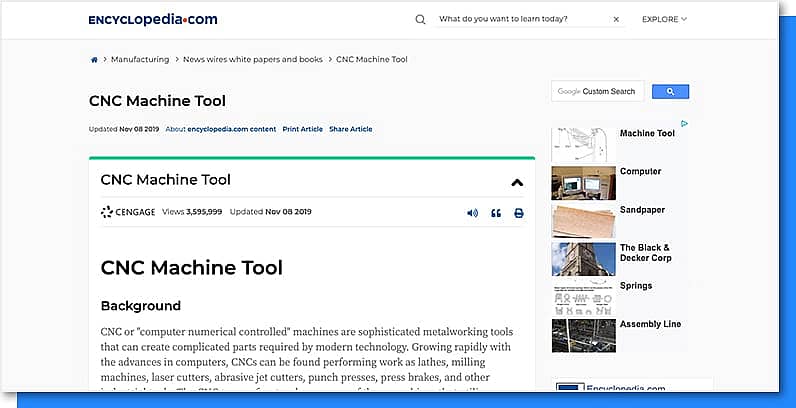
Currently, “Common manufacturing processes that use CNC machines include bending, drilling, hole punching, gluing, grinding, laser cutting, flame and plasma cutting, routing, picking and placing, ultrasonic welding, and more. Mills, lathes, electric discharge machining, and water jet cutters often operate using CNC.”
A quick review of the histories of both 3D printing and CNC machines evidence the potential for either one to optimize your manufacturing processes when setting up a prototyping lab.
Evaluating Additive vs. Subtractive Manufacturing Processes
In order to determine whether your prototyping lab requires 3D printing or CNC mills, you need to first consider whether your products are designed to be most effectively and efficiently delivered according to additive vs. subtractive manufacturing processes.
The distinction between the two is easy to remember: additive, as the name implies, adds layers, while subtractive starts with a single unit and removes materials to create the finished product. While CNCs represent subtractive manufacturing, 3D printing exemplifies additive.
A key benefit of subtractive over additive is, “They offer a variety of surface finishes, doing away with the “stepped” surfaces often found in many additive processes. The finish can be functionally important if parts must slide, and cosmetically important if the prototypes are to be used in market testing.”
It helps to consider the types of applications these processes support.
Understanding Additive vs. Subtractive Applications
Although the newcomer between the two, “Additive manufacturing is already used to produce an impressive array of products.” 3D-printed products are found in the following industries: aerospace, automotive, healthcare, and product development.
Despite the trending nature of 3D printing in various industries, the fact remains, “Subtractive manufacturing gives you the opportunity to design, prototype, and manufacture in end-use materials. It is an appropriate choice for parts used for small and large volume production runs, to obtain specific finishes, or to obtain specific mechanical properties.”
For this reason, “Subtractive processes are very widely used in manufacturing… Lathe-turning, milling, drilling, sawing, thread-cutting, and gear-cutting are some examples of subtractive processes involving metal-cutting that are traditionally carried out in specialized machines.”

Aside from applications, there are other factors to consider when weighing 3D printing and CNC machining.
Tune in to Noise and Vibration
When you think of the basic tools used in CNC machining: mill, lathe, plasma cutter, electric discharge machining, multi-spindle machine, and water jet cutter, it’s not hard to imagine that subtractive manufacturing processes produce more noise and vibration on-site than additive manufacturing. Depending on your location, this will likely inform what you need to set up your optimal prototyping lab.
Which is Easier to Operate? 3D Printers or CNC Machines
In general, 3D printing is touted as an easier operation compared to CNCs. The main reason is “because once the file is prepared, you just need to choose the part orientation, fill, and supports if needed. Then once printing has commenced, no supervisor is required, and the printer can be left until the part is finished.”
Because CNCs are more involved, with respect to labor, there is a pervasive belief that CNC machining requires a trained machinist. While that might have been the case back in the day, times have changed.
At DATRON Dynamics, we know better and have developed our high-speed machining application to streamline your entire production workflow from start to finish, which helps eliminate expertise bottlenecks. With our high-speed machining, practically anyone can set up a job with our easy-to-use touchscreen interface — from art intern to senior machinist.
DATRON machines incorporate multiple features that enable an easy setup. In fact, the machine can walk a novice user through the entire process of setting up a CNC machine for the first time. Ultimately, it takes an average of only one to two days’ worth of training to feel comfortable and confident using the technology.
The DATRON interface is designed to appear and function similarly to a smartphone, complete with a camera and mechanical probe system which automatically registers the part, mitigating the need for a skilled technician to input this information. Integrated workholding solutions and cutting tool technology are inclusive, keeping the entire process in-house by removing the need to spec out and purchase similar components elsewhere.
Know Your Limitations: Accuracy, Size, and Geometric Complexity
When considering 3D Printing vs CNC Machining — Which is the Best Option for Your Prototype? Josh Biggs states: “For one CNC machining is a great option if you’re looking for great dimensional accuracy. In addition, CNC machining can work with materials that cannot be printed yet, such as wood, for instance. CNC machining also beats 3d printing when it comes to working with metals and works just as well with plastics.”
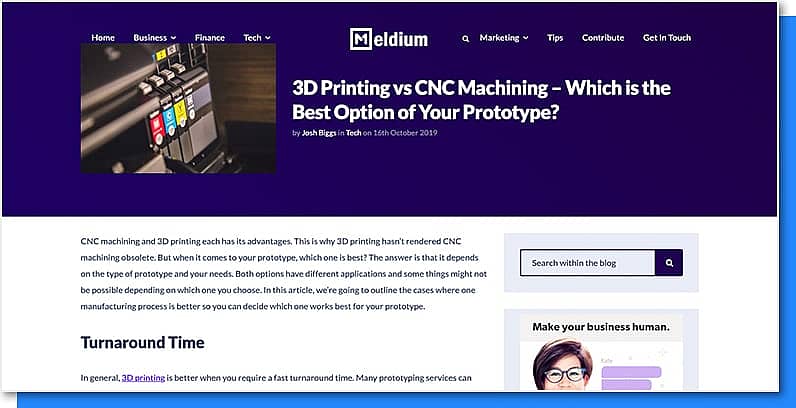
He goes on to assert that, “In addition, CNC machines offer more precise results usually. CNC machines are the better choice if you need very narrow pieces or have incredibly tight tolerances. Nothing else matches the 0.01 mm tolerances.”
Even the team at 3Dnatives, which is dedicated to additive manufacturing details and all things related to 3D printing, reports a considerable advantage of subtractive manufacturing: “In terms of tolerance, CNC machining is superior to all 3D printing processes.”
However, when tasked with manufacturing parts featuring high geometric complexity, 3D printing has the advantage.
Weighing the Costs: 3D Printing vs. CNC
As you can see, manufacturing isn’t a single-solution proposition. The amount of money required for your prototyping lab will depend on not only what you’re producing but the size of and how many items you’ll produce.

For instance, according to Biggs’ simple cost-benefit analysis:
If you’re making a single prototype, 3D printing is almost always cheaper. For small runs, 3D printing is generally more affordable. However, the price will vary based on the material used… CNC machining is cost-efficient in larger runs. If you’re making 50 to 100 prototypes, CNC machining is probably the better value.
Interesting Engineering published Common Misconceptions about CNC Machining Production, dispelling the myth about costly CNC processes:
One of the most common misconceptions is that CNC machining services are expensive. In reality, pricing for CNC prototyping can start as low as approximately $100 for a single part, and the unit price drops dramatically for manufacturing parts in higher quantities. Because of automation and the economy of scale, CNC machining is one of the most economical options for producing parts in bulk numbers. Whether you have a smaller project that needs a unique prototype for a single part or need to mass-produce large quantities.
Obviously, the most cost-effective route for your business is best determined by your specific product designs and plans.
When it comes to 3D printers, the options, sizes, and price range runs the gamut, and so does what each one can print from various materials. In addition to unknown or ill-defined materials costs, operators usually require training from a resident expert, which represents an investment in staffing education.
With DATRON equipment, our cutting machines accommodate plastic, wood, aluminum, and steel from any vendor, allowing you to estimate and establish your cost of materials up front. As we’ve explained, there is no advanced training required to operate our machines, saving you on staffing, and making DATRON CNC machines a more cost-effective alternative.
Waste Not, Want Not
Given the nature of subtractive manufacturing — stripping layers of material away to create a product — not to mention the types of CNC machining tools required, it should come as no surprise that CNC machines can leave a little mess behind.
How much mess and what that waste might mean is something Energy.gov evaluated in the 2015 review, Innovating Clean Energy Technologies in Advanced Manufacturing. The report highlights a benefit of additive manufacturing as its potential to “save energy by eliminating production steps, using substantially less material, enabling reuse of by-products, and producing lighter products.”
The report continues:
Building objects up layer upon layer, instead of traditional machining processes that cut away material, can reduce material needs and costs by up to 90%. AM can also reduce the “cradle-to-gate” environmental footprints of component manufacturing through avoidance of the tools, dies, and material scrap associated with CM processes. Additionally, AM could reduce waste by lowering human error in production.
Introducing a Cleaner Act
At DATRON, we’ve fine-tuned our high-speed machining equipment to eliminate the mess, making it possible to remove finished parts without deburring or degreasing.
What’s more, DATRON’s CNC tools and accessories offer the highest RPM available in the smallest footprint machine on the market — consider it our own green initiative.
Typically, CNC milling machines with industrial capabilities feature large motors that generate a great deal of heat, which requires oil to cool and lubricate the machine components. Disposing of oil is necessary, but the process poses a risk to the environment as we’ve seen from major spills in the past.
At DATRON, the machines were developed to be incredibly compact, efficient, and quiet. This keeps the heat factor down, removing the need for oil. The machines mill with alcohol, which evaporates during cutting, keeping all parts and components dry and clean.
Since we don’t require the same amount of heat, oil, or flood coolant to maintain the machines, we offer better energy savings from a much smaller footprint.
The Verdict: 3D Printing vs. CNC Machining
What you need in your professional prototyping lab, whether 3D printing or CNC machining, is best determined by your specific product. While we hope the information shared here provided some clarity, the truth is both 3D printing and CNC machining can work — or even complement each other, based on your manufacturing needs.
In fact, there are several cases for When You Should Combine 3D Printing and CNC Machining, primarily due to tolerances, time, and/or a significantly sized workpiece; moreover, “Combining these two processes doesn’t require the complex workflow you might be envisioning. Just as importantly, it can deliver several meaningful benefits for your manufacturing company.”
For a more in-depth discussion about the manufacturing process or combination of processes ideal for your prototyping lab, contact us. Our application engineer team is ready to share their expertise.

